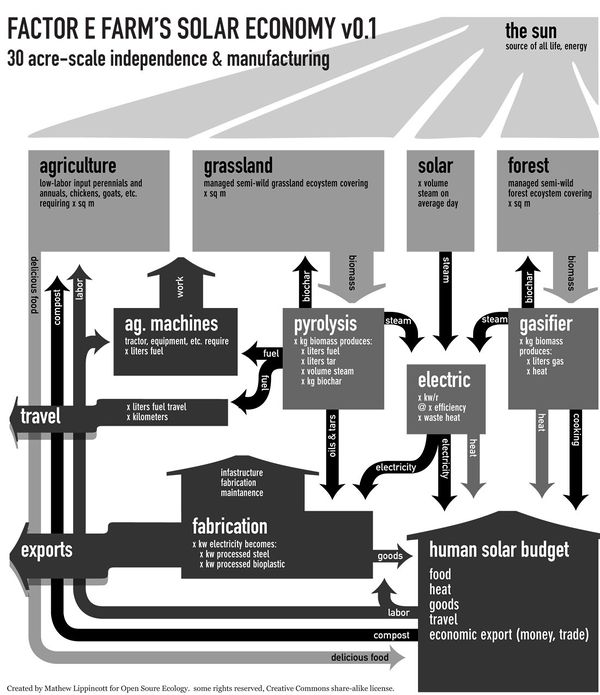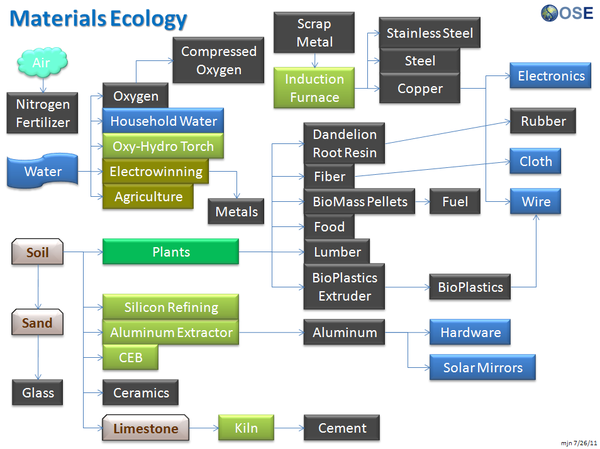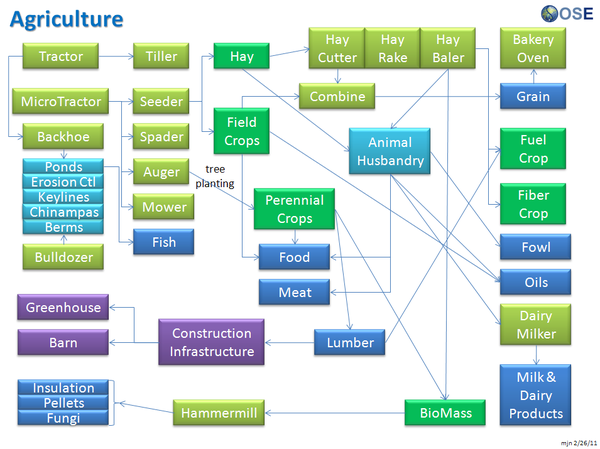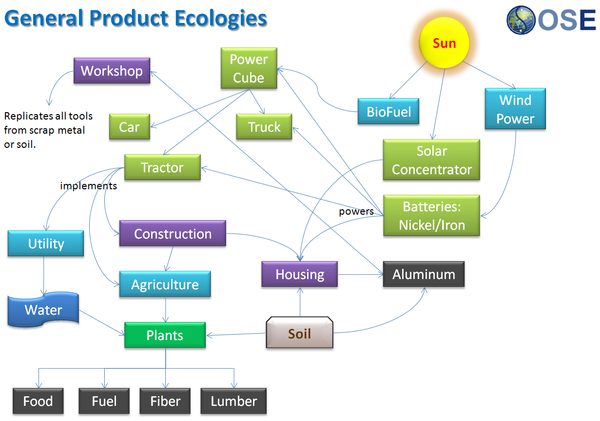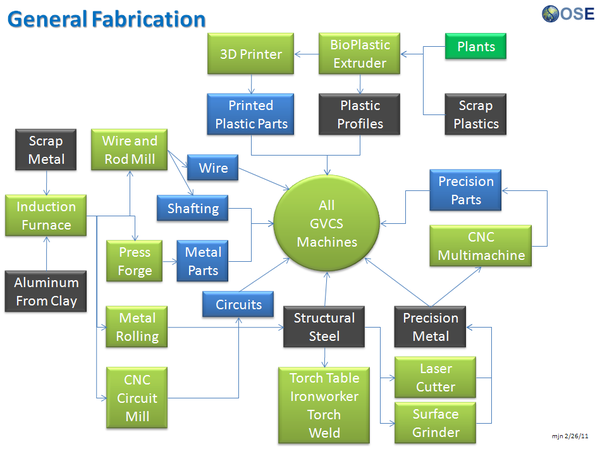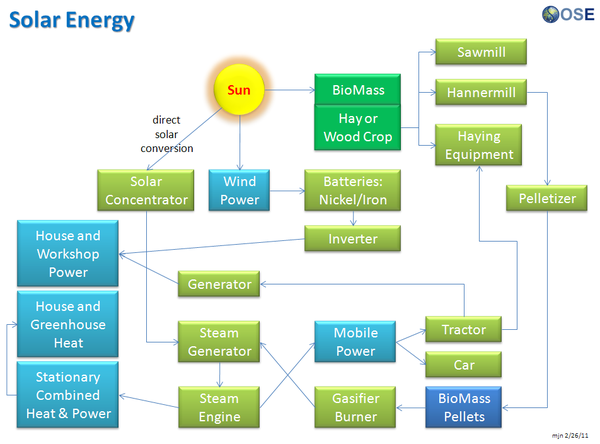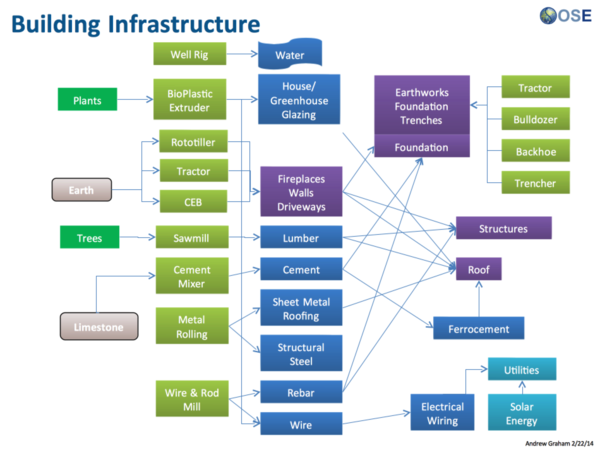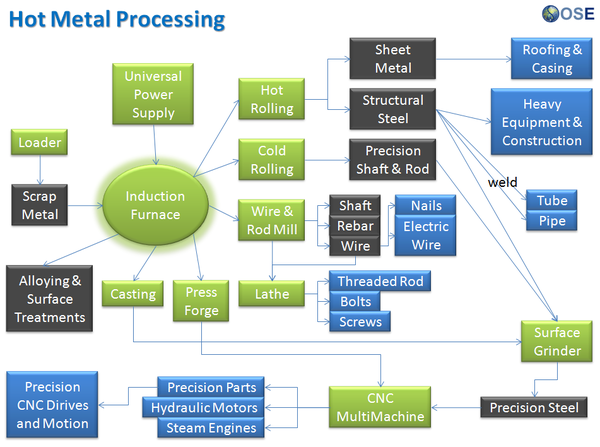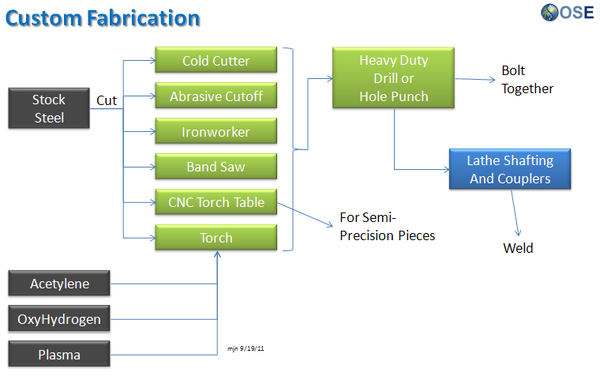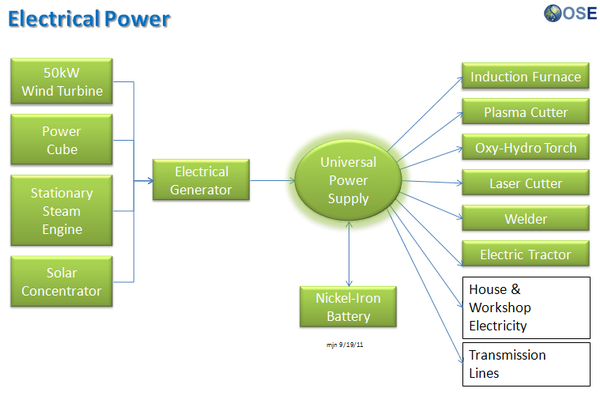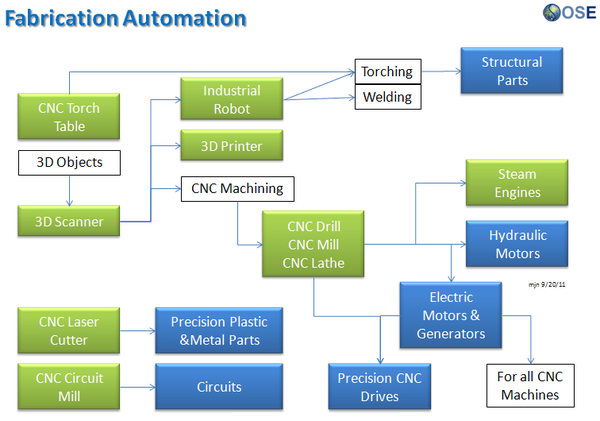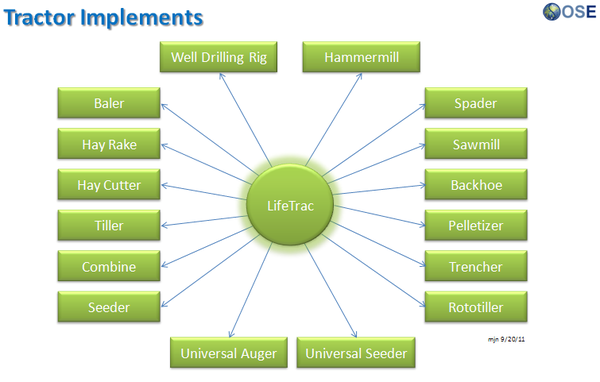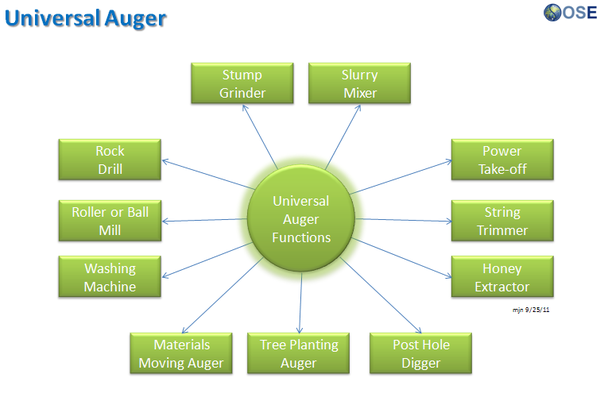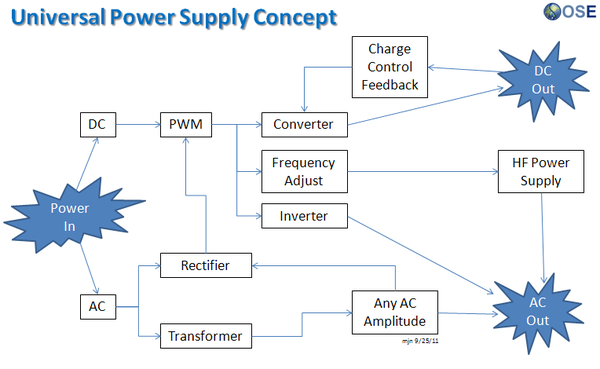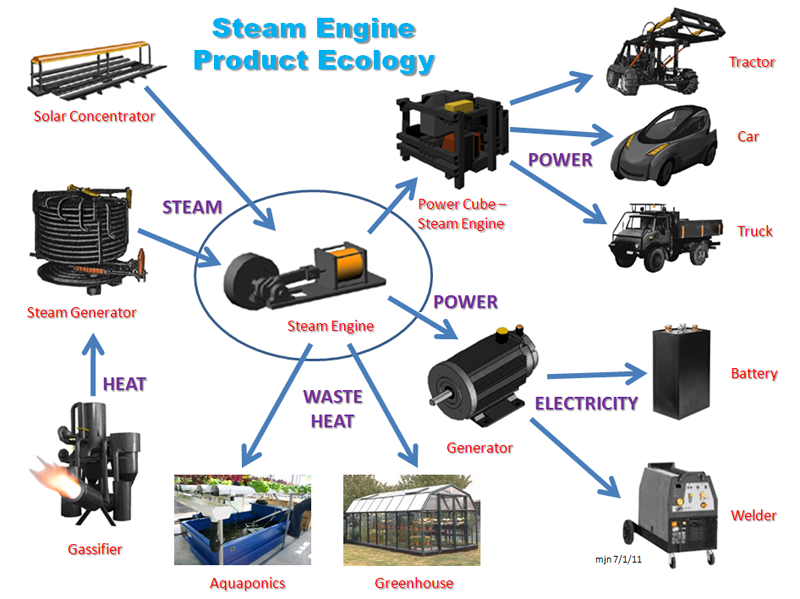Product Ecologies
see also: Pattern Language. Note: see notes on Emergent Ecologies
Introduction
Product Ecologies illustrate how the different tools and products of the GVCS work together. This includes how the tools utilize onsite resources for building a modern infrastructure. This also includes module based design, where machine modules can interchange between various machines. For example, motors, power units, and implements interchange within the tractor, microtractor, car, truck, fabrication, and bulldozer infrastructures. Ecologies can also refer to how certain machines make other machines, with the goal of creating closed-loop material cycles - such as the induction furnace contributing to the production of tractor parts, construction roofing, or wire from recycled metal feedstock. The goal is to create closed loop industrial ecologies that contribute to environmental and societal regeneration, as humanity regains balance with its natural life support systems.
2023 Update
Product ecologies are relevant to low-cost infrastructure-building. This is part of OSE's tactics of mutually assured abundance, ie, eradiction of artificial scarcity as a route to material security in civilization. A concise updated infographic shows the plastic-wood-metal-concrete-semiconductor ecology based on wood, water, and rock feedstocks.
- 3D printers make organizing containers for production and warehouse facilities from scrap plastic. They also print PVC, PE, PP, PET, PS, PC, Nylon, and other containers for larger bulk storage, up to water storage and gas storage.
- 3D printers make wood-plastic composites for construction, from trim to structural, and landscaping.
- 3D printers make PVC fittings, electrical fittings, and complex fasteners/geometries for construction.
- 3D printers make UV-stabilized glazing from PC, PE, PVC, and other materials, as well as siding, roofing, living roof, geogrid.
- Wood combine makes lumber from harvest to finish. A combine sized machine.
Enterprise Ramifications
Combining anthropogenic and natural resources available everywhere - we have PV, plastic, ag, metal, wood, CNC precision metal, engines, generators, and solar velomobiles - from rocks, sand, clay, plastic, metal, and wood. These meet 80% of the top 3 items in a person's Cost of Living, and may lead to Self-determination if addressed properly.
Notes on Flexibility
Note that the following are general suggestions. There may be many instantiations. For example, if we design a Piston Engine Construction Set, then steam is one option, and so is diesel/gas with the same modules but different injectors.
Ecologies
See Also
- Factor e Live Distillations - 10 part video series (about 10 minutes each)on product ecologies from 2009
- Pattern Language
- Early Product Ecology Graphics
- Fab Lab
